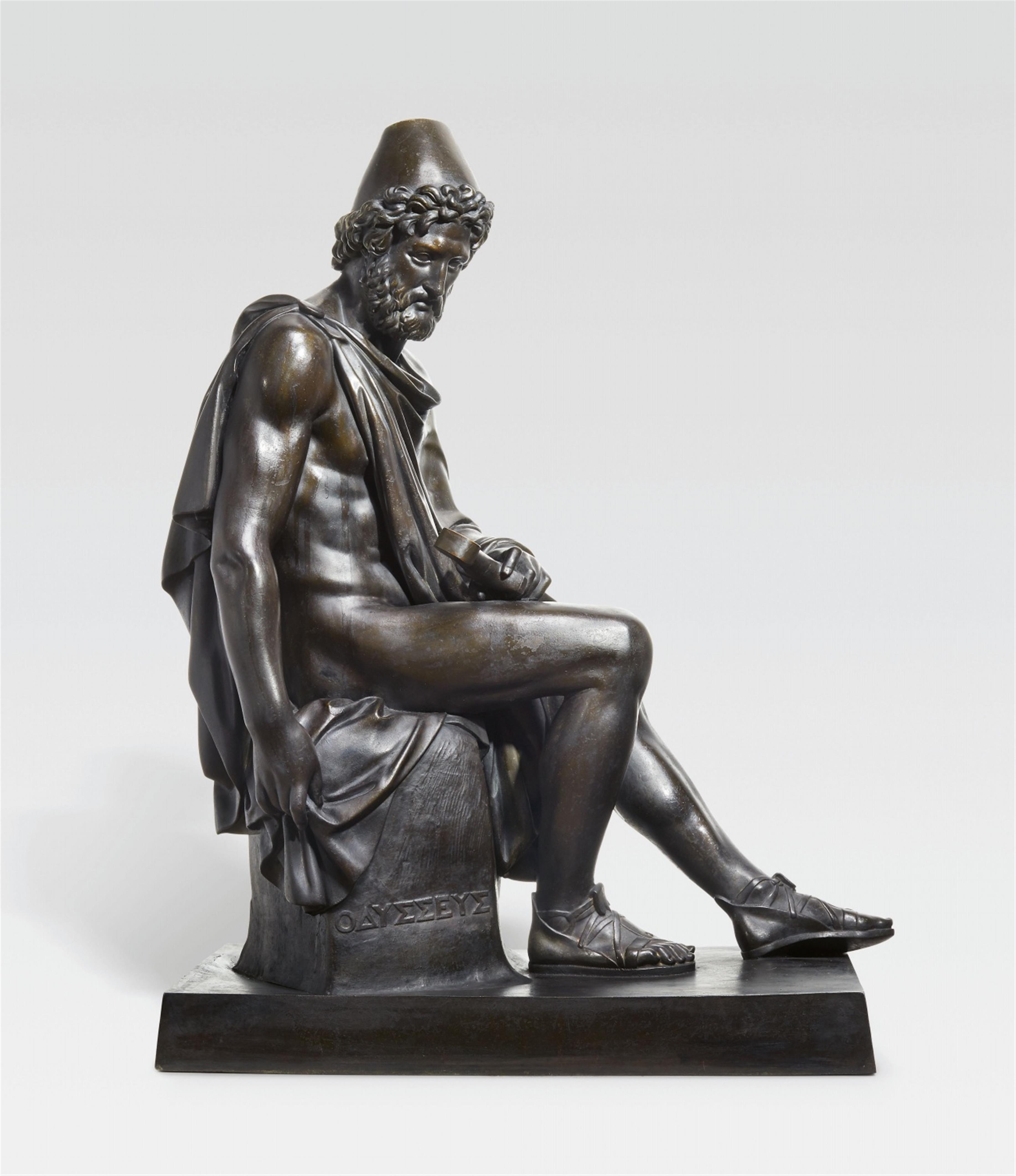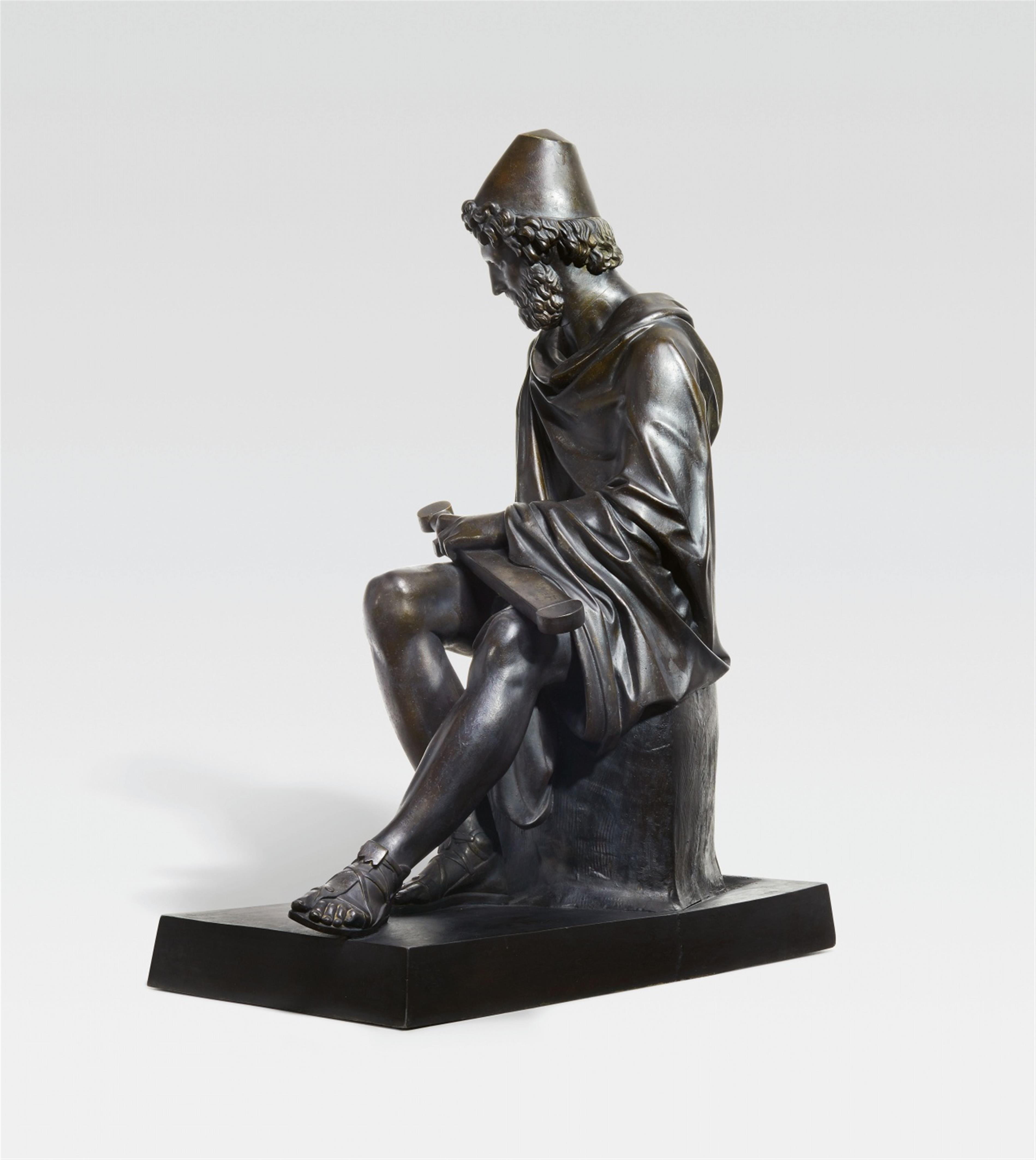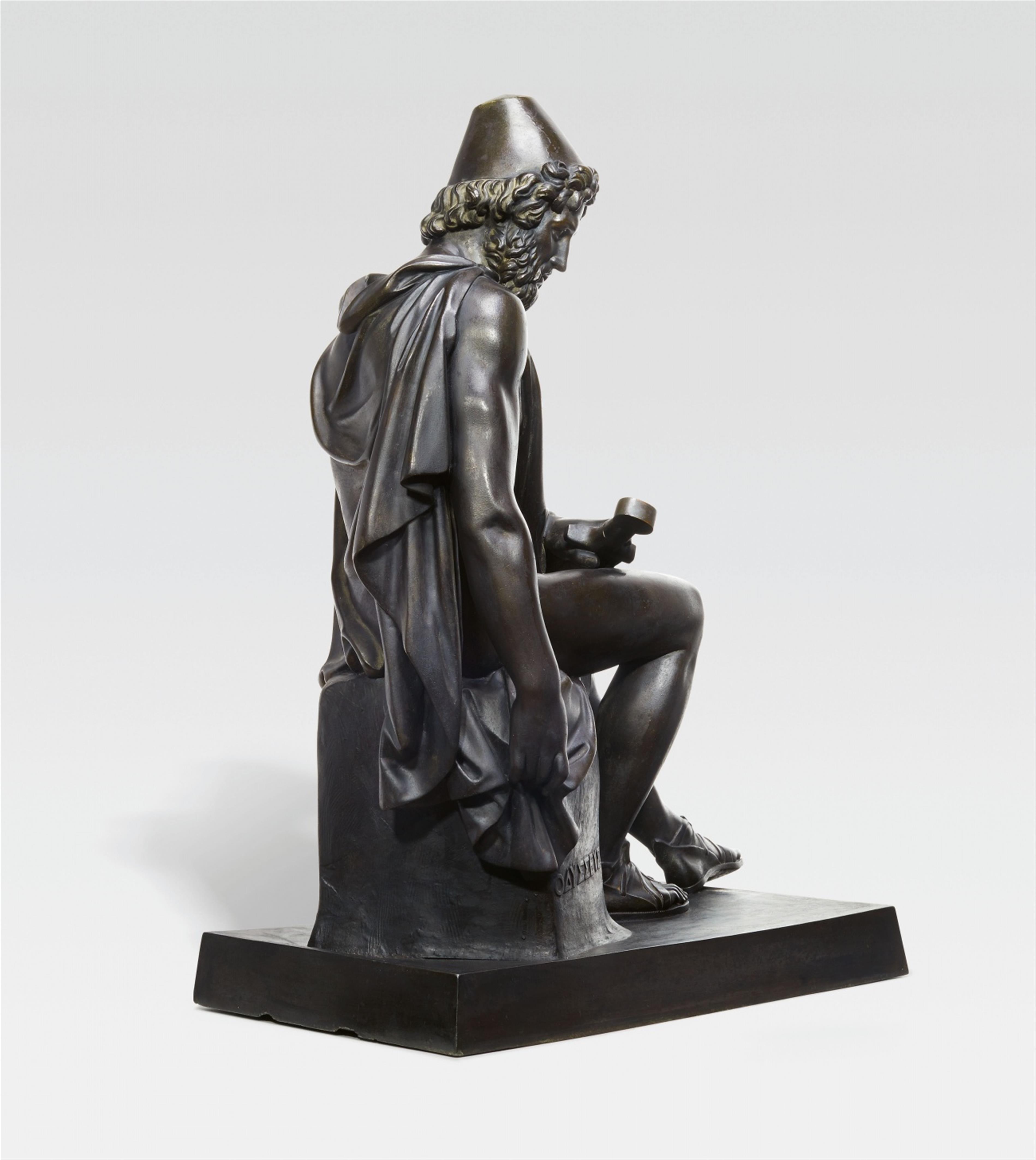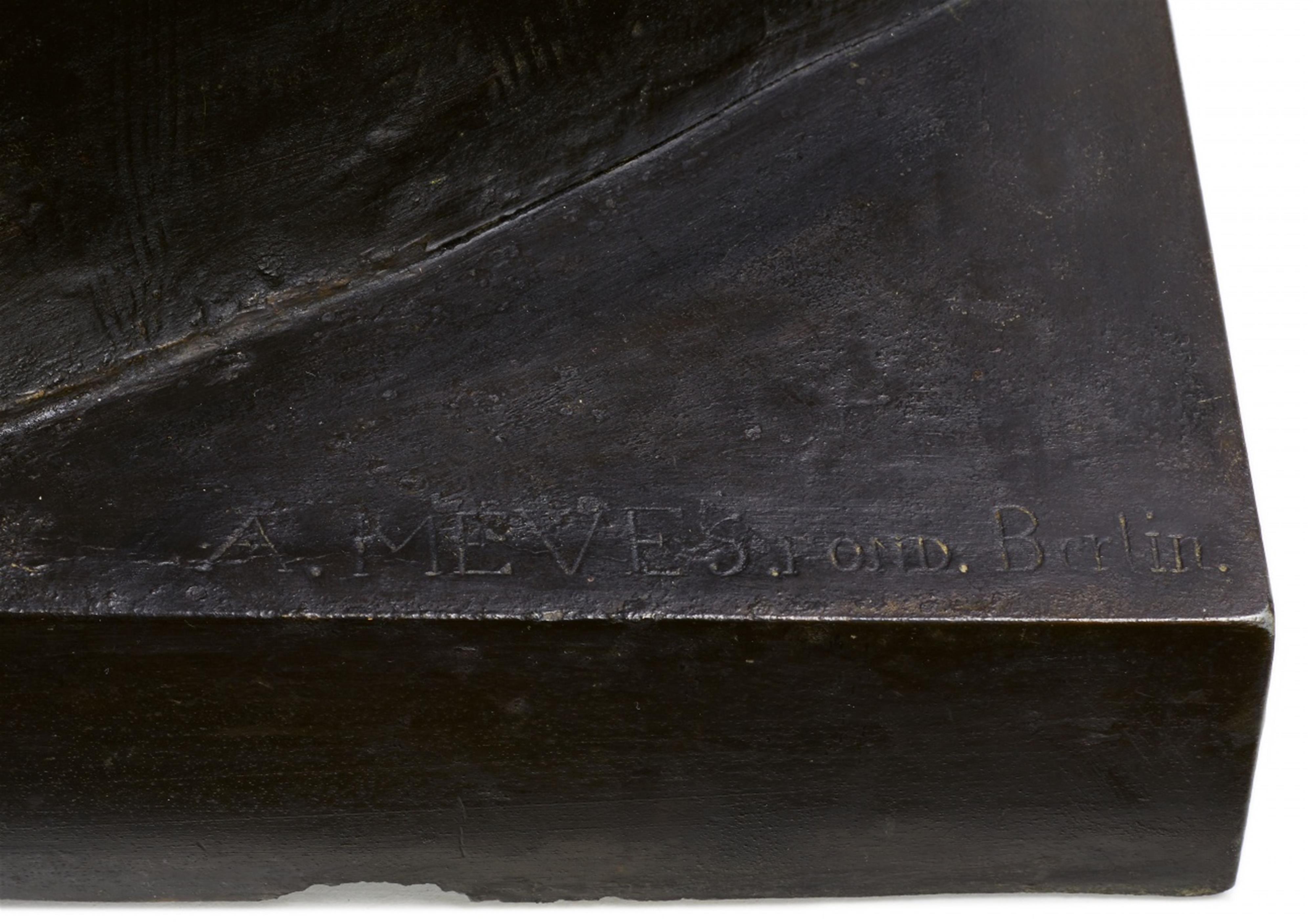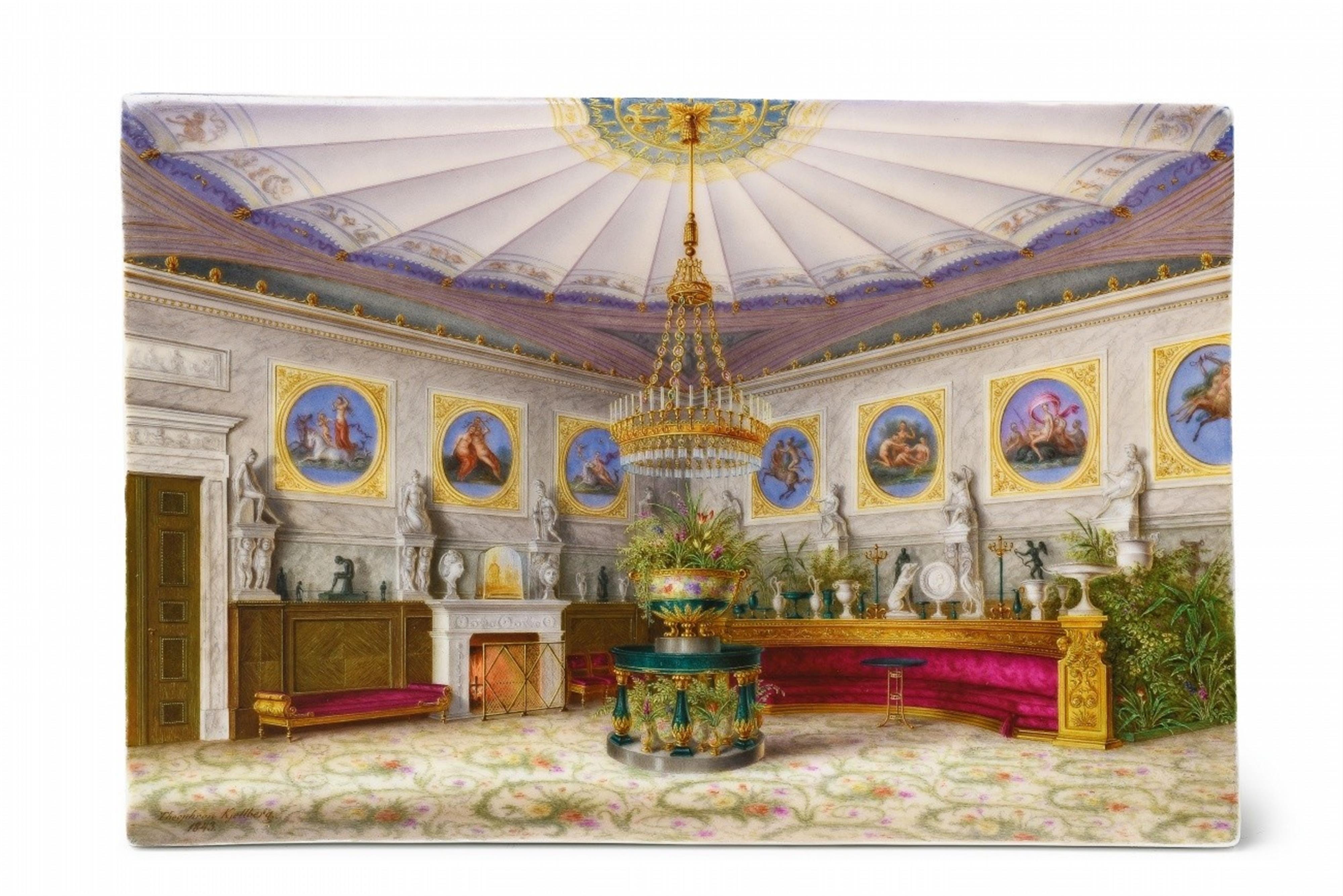A cast zinc figure of the returning Odysseus
Cast zinc with shimmering blackish brown patina. Depicting Odysseus sitting on a stone wrapped in a drapery fastened over his right shoulder, holding a shortsword in his hand and wearing a cap and sandals. The stone inscribed “ODYSSEUS” in Greek, the plinth engraved “A. MEVES FOND. BERLIN.” A small dent on the right elbow, two minor losses to the back of the plinth, some casting cracks. The figure slightly sunken into the plinth on the reverse. H 85, W c. 64.5, D 35 cm.
Berlin, Eisen- und Zinkgießerei Albert Meves, 1840er Jahre, das Modell von Christian Friedrich Tieck, 1825 - 27, ursprünglich für den von Karl Friedrich Schinkel ausgestatteten Teesalon im Berliner Schloss.
In close collaboration with Karl Friedrich Schinkel, Christian Friedrich Tieck (1776 - 1851) worked from March 1825 on a group of 15 mythological figures for the so-called Tea Salon of Crown Princess Elisabeth of Prussia in the Berlin Palace. The spectacular room, which served the cultural receptions of the crown prince and princess, was intended to evoke a Pompeian atmosphere through numerous allusions to antiquity. Schinkel designed a sensational circular bench as if for a Roman exedra, as well twelve chairs and two benches in the antique style. On the panelling behind them, Tieck's sculptures of seated figures were placed on architectural consoles. Between the figures hung tondi with Neoclassical paintings by various Berlin painters. The room was spanned by an illusionistically painted, concentrically inflated sail, the velarium, in the centre of which was a large gilded candelabra. Some furnishings were added later, such as the central malachite jardinière, which the Crown Prince received as a gift from Tsar Nicholas I during a visit to Russia in 1834. Little remains of the so magnificently furnished tea salon in the Berlin Palace. The Second World War and the demolition of the palace in 1950 destroyed everything that remained of the Crown Prince's large and representative rooms in Berlin. Only a few of Tieck's plaster sculptures, albeit fragmentary, survive in the collections of the National Museums, such as the figures of Psyche, Iphigenia, Demeter, Persephone, Omphale, Electra and Hippolyte. After the completion of the tea salon, Tieck hoped for commissions to realise his figures in marble. Since these were not granted, the plasters remain as the "most authentic remains", as Bernhard Maatz puts it. But Maatz also mentions individual early zinc casts, citing that of Achilles as an example. This was also confirmed by Sabine Hierath with the proof that Achilles existed in the Berlin Trinity Cemetery as a zinc cast made after 1847, which, however, had long since been destroyed. This leaves the Ulysses, which, although made of zinc, is the only example that gives us an impression of Tieck's original design.
Literature
"One can see the marble version made for the tea salon in Berlin Palace on the left in the watercolour in the SPSG collection (inv. no. 2906a) and on a porcelain platter painted by Theophron Kjellberg in 1843 (auctioned by Lempertz Berlin, auction 1125 on 7th November 2018, lot 110, cf. also cat. Raffinesse & Eleganz, Munich 2007, no. 121).
The watercolour depicting the tea salon and the marble sculpture published in cat. Karl Friedrich Schinkel, Möbel und Interieur, Hamburg-Munich-Berlin 2002, no. 12.
Cf. also cat. Karl Friedrich Schinkel Geschichte und Poesie, Berlin-Munich 2012, no. 155.
The surviving plaster models by Tiecks in cat. Nationalgalerie Berlin Das XIX. Jahrhundert, vol. 2, Berlin 2006, no. 1245 ff.
Cf. also Hierath, Berliner Zinkguß. Architektur und Bildkunst im 19. Jahrhundert, Cologne 2004, p. 170, illus. 118."

